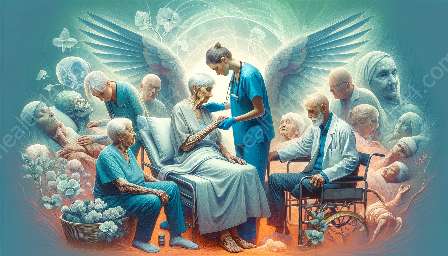As the aging population increases, the demand for geriatric rehabilitation and specialized physical therapy also grows. Physical therapy for geriatric populations involves specific considerations that are crucial for improving the quality of life for older individuals. This article explores the important factors and strategies related to geriatric rehabilitation and physical therapy in the context of geriatrics.
The Aging Population and Physical Therapy Needs
Geriatrics is the branch of medicine focused on the care of older adults. With advancements in healthcare and technology, people are living longer, resulting in a greater number of seniors requiring physical therapy. In this context, geriatric rehabilitation plays a vital role in addressing the specific needs of older individuals.
Specific Considerations for Physical Therapy
When providing physical therapy to geriatric populations, several specific considerations must be taken into account:
- Functional Limitations: Many older adults have functional limitations related to mobility, balance, and strength. Physical therapists need to tailor interventions to improve these limitations and maintain independence.
- Chronic Conditions: Geriatric patients often have multiple chronic health conditions, such as arthritis, osteoporosis, and cardiovascular diseases. Physical therapists must integrate treatment plans to address these conditions while considering the individual's overall health status.
- Fall Risk Assessment: Falls are a major concern for older adults. Physical therapists evaluate and address factors that contribute to fall risk through exercises and balance training.
- Cognitive Impairment: Cognitive decline can impact the ability to participate in physical therapy. Therapists need to adapt their communication and treatment approaches to accommodate cognitive impairment.
- Pain Management: Chronic pain is common in geriatric populations. Physical therapists employ various modalities and techniques to manage pain and improve overall function.
- Social Support: Considering the psychosocial aspects of aging is essential in physical therapy. Creating a supportive environment and involving family members can contribute to successful rehabilitation outcomes.
Role of Geriatric Rehabilitation
Geriatric rehabilitation focuses on restoring and maintaining functional abilities, promoting independence, and improving the overall well-being of older adults. In addition to physical therapy, it encompasses various disciplines, including occupational therapy, speech therapy, and social work, to address the comprehensive needs of elderly individuals.
Integration of Evidence-Based Practice
In geriatric rehabilitation, physical therapists rely on evidence-based practice to ensure the effectiveness of interventions. This involves using research and clinical expertise to guide treatment decisions and optimize outcomes for older adults. By staying updated with the latest research, physical therapists can provide high-quality care tailored to the specific needs of geriatric populations.
Adaptation of Environments and Assistive Devices
In many cases, adapting the living environment and utilizing assistive devices play a crucial role in the rehabilitation process for geriatric individuals. Physical therapists assess the home environment and recommend modifications to enhance safety and accessibility. They also educate patients on the use of assistive devices to support independent living.
Collaboration with Multidisciplinary Teams
Effective geriatric rehabilitation often involves collaboration with multidisciplinary teams, including physicians, nurses, and other healthcare professionals. This coordinated approach ensures comprehensive care and addresses the diverse needs of older adults, leading to better outcomes and increased patient satisfaction.
Consideration of Individual Goals and Values
Understanding the unique goals and values of geriatric patients is fundamental in physical therapy and geriatric rehabilitation. By incorporating the individual's preferences and aspirations into the treatment plan, physical therapists can foster a patient-centered approach that enhances motivation and engagement in the therapeutic process.
Conclusion
Physical therapy in geriatric populations requires a specialized approach that accounts for the multifaceted needs of older individuals. Integrating specific considerations such as functional limitations, chronic conditions, fall risk assessment, cognitive impairment, pain management, and social support is essential for promoting successful outcomes in geriatric rehabilitation. By embracing evidence-based practice, collaboration with multidisciplinary teams, and a patient-centered focus, physical therapists can make a significant impact on enhancing the quality of life for geriatric populations.


